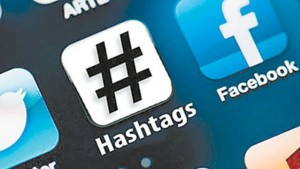 We have all seen them, use them or been annoyed by them when abused, something I call hashtag vomit. Users who don’t understand hashtags tagging their post with so many irrelevant and annoying hashtags you just want to move on without reading the post.
We have all seen them, use them or been annoyed by them when abused, something I call hashtag vomit. Users who don’t understand hashtags tagging their post with so many irrelevant and annoying hashtags you just want to move on without reading the post.
It started on Twitter, Facebook unsuccessfully tried to incorporate them in posts, LinkedIn gave up on them, Instagram and Pinterest users swear by them but few actually understand their use and purpose.
By definition, A hashtag is a type of label used on social network and micro blogging platforms to make it easier for users to find messages with a specific theme or content. In short, hashtags are like keywords allowing readers to find content related to a subject and should be treated as such
Social media “gurus” have been promoting hashtags as essential to social media posts and content success, advising marketers to use hashtags as a critical element of any high-performing social media update without educating their clients and the public about the way to effectively use them
The result has been hashtag vomit, what mainstream search engines would classify as spam. We have seen updates and content with plethora of hashtags, some relevant most irrelevant for the sake of trying to maximize potential exposure.
The question has long been, do hashtags actually work?
The answer is yes and no, depending on your purpose
Twitter recently released a study focused on direct response ads, which are intended to drive a specific result, like an app install or a website visit, suggesting that when these ads included a hashtag or mentioned another account, they didn’t perform well
If your goal is to drive visitors to your website, a tweet that doesn’t include a # or @ mention will generate 23 percent more clicks and when the goal of your tweet is to drive the reader to install an app, forgoing a # or @ mention increases clicks by 11 percent.
The Twitter study shows that the “clickable” parts of a tweet (hashtag or @) distract people from taking the action the advertisers want.
According to Anne Mercogliano, head of SMB marketing at Twitter.
“If you’re trying to join a conversation, you should absolutely use a hashtag,” she explained. “But for driving for a specific click that you’re looking for off Twitter, the less noise that you put in between [the better].”
Tips for using hashtags:
- Be specific: If you’re using a hashtag to join a conversation, make sure the hashtag is specific and relevant to your topic.
- Keep it simple: Hashtags, like links, look like spam if they are used too often. Three hashtags should be the maximum on Twitter and Facebook, but you can get away with more hashtags on Instagram and Vine. And don’t hashtag the same word twice
- Give context: A tweet that contains only hashtags is not only confusing, it’s annoying. Hashtags should give context or add to the conversation
- Use relevant hashtags: See what hashtags other businesses in your field are using, consider them keywords users will search on to find you
- Follow trends: See what hashtags are trending and make use of them — if they are relevant to your business. Using a popular hashtag that has nothing to do with your brand makes you look like a spammer and hurts your credibility and your brand.
- Create your own hashtag: Create a special hashtag for an event or campaign, select a unique hashtag and remind everyone to use it in related tweets and retweets. Be sure to include the hashtag in any promotional materials. Make it informative but short
